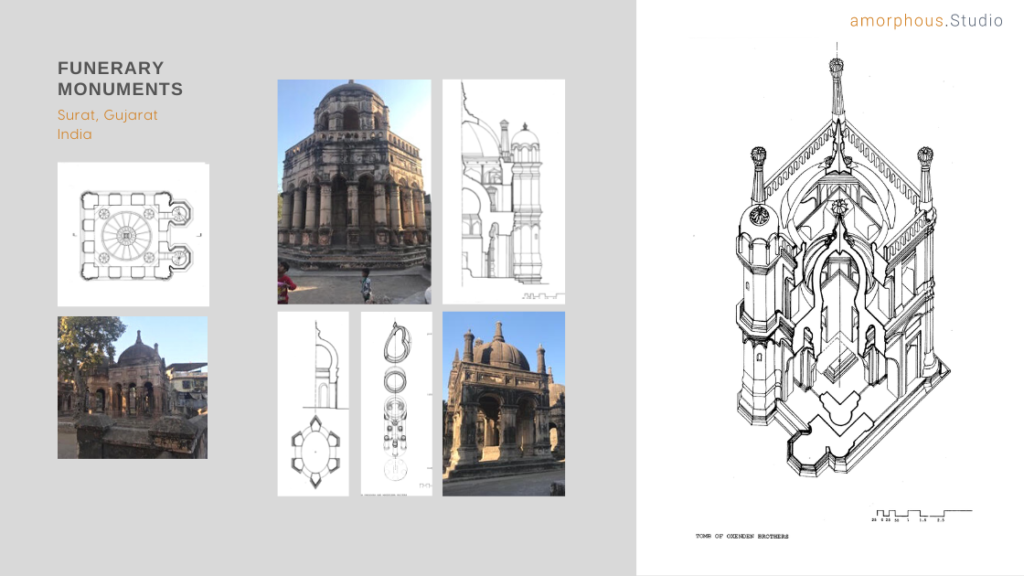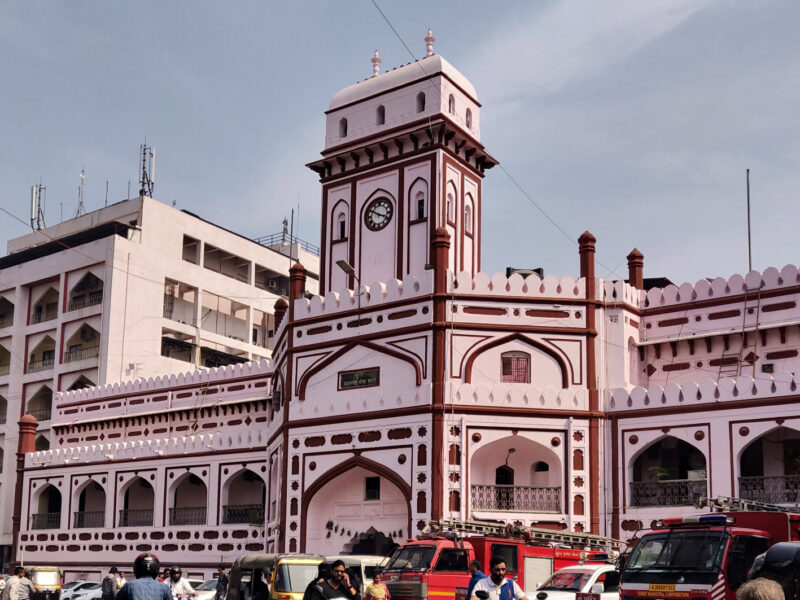
Architecture as Spiritual Expression
Architecture as Spiritual Expression https://amorphousstudio.net/wp-content/uploads/2021/06/Amorphous-Blog-Graphics-2-1024x576.png 1024 576 Amorphous Studio Amorphous Studio https://amorphousstudio.net/wp-content/uploads/2021/06/Amorphous-Blog-Graphics-2-1024x576.png
Funerary Monuments of Surat
Magnificent monuments can be found throughout India’s walled city of Surat. Arguably, the most grandiose are the funerary monuments in Gulam Falia’. Built with glorious detail in the early 15th century, the ‘Funerary Monuments of Surat’ sat quite neglected, nearly in ruins, despite Surat being the thriving business capital for the state of Gujarat in India.
I was curious about the genesis of these architectural wonders. So 20 years ago, as a student of Faculty of Architecture at CEPT University, in Ahmedabad, India, I began working on the Funerary Monuments of Surat, with Professor Rabindra Vasavada as my guide. My research focused on the local socio-political climate of the time in order to compose measured hand-drawings of the Dutch and Armenian Cemeteries, and the intricate details of the Oxenden Brothers’ Tomb.
Read more about my story and how it influenced me as an architect here.
History Reflected in the Art of Architecture
India was a prominent country during the 15th and 16th centuries due to its ancient human settlement, intellectual growth and its location on the silk trade route which attracted foreigners to its soil. It was particularly attractive to westerners due to its natural resources of spices, minerals and silk, among the many other invaluable things.
Surat was a bustling port due to its location on the western edge of the country and its easy access by land and water from prominent countries such as but not limited to England, Armenia and The Netherlands. It became a significant trade center where people came together— at one place, at one time—and engaged in important business transactions.
With this knowledge, I began to appreciate how these stately funerary monuments are an embodiment of elements and values from both Eastern and Western cultures. While the monuments belonged, mostly, to foreigners and expatriates, they were built with the help of local artisans and laborers—influenced by their own cultural experience—that designed and built them.
The monuments are an amalgamation of different philosophies. The design elements are a visual representation of the collective struggle to understand death as a fearful phenomenon which can only be answered by the one and only Almighty in Heaven (sky). Based on this understanding, the vertical, directional emphasis in the design of these monuments symbolizes the basic premise of enabling the buried dead body’s soul to find peace in Heaven. I found evidence of similar designs and interpretations in funerary monuments throughout the world that were built before and during the same period.
Design and Architecture Are Spiritual Expressions
I was intrigued with how each culture’s contribution to the creation of these sacred monuments of death was guided by the principles of religion, nature and the surrounding universe. By the end of my research, I concluded that human beings, ultimately, think alike even though their means of expressing their thoughts and emotions are different. Also, as intellectual beings, humans realize, like all things of the natural world, we are mortal and should live in harmony with nature as it supports our livelihood. This concept is visually and structurally depicted in buildings throughout the world.
As an architect, and having been in the field of architecture for almost 28 years, I am still always observing and learning from my environment. When I study examples of architectural history, I enjoy learning how the local natural climate and geographic conditions, local cultural and religious philosophies, socio-economic and political climate, local building materials and craftsmanship shape the structures we build in a meaningful manner. This influences every aspect of my process with each and every client.
What architectural wonders fascinate you?
- Posted In:
- Uncategorized

